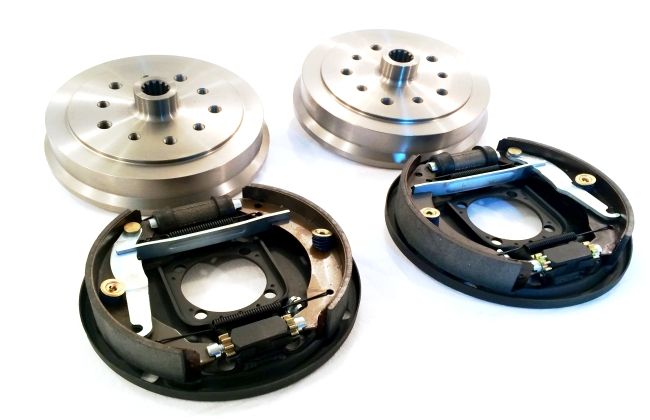Technology Decoded: Drum Brakes
మార్చి 10, 2016 10:45 am sahib ద్వారా సవరించబడింది
- ఒక వ్యాఖ్యను వ్రాయండి

Drum brakes are widely deployed in order to slow down or stop the vehicle. A drum brake stops the vehicle with the help of a set of shoes that press against a rotating drum-shaped part of cylinder causing friction. This is achieved by means of a cable (mechanical drum brake) or hydraulic pressure (hydraulic drum brake).
Background/Development:
- First mechanism to slow a vehicle’s momentum and prevent motion was tested in 1800s.
- Louis Renault developed first mechanical drum brake in 1902, but it had been invented earlier by Gottlieb Daimler.
Technology Explained:
Drum brakes are normally fitted on rear wheels. Drum brakes feature internal expanding type of shoes which expand against a brake drum as we apply the brakes. As these drums are connected to the wheels, when the brake is applied it leads to braking of the vehicle.
1. Mechanical Drum Brake:

- Both shoes S1 and S2 are pivoted on anchor pins O1 and O2 respectively at one end and made to contact a cam at the other end, so that when cam is turned the shoes are forced towards the drum.
- Brake lining is fastened to the outside surface of each shoe to increase the coefficient of friction and to prevent the wearing away of metal.
- The force of friction is opposite to drum rotation hence this frictional force helps in stopping or slowing down the drum.
- A retracting spring draws the shoes away from the drum when the cam is moved to the release position. Self adjuster is also there which maintains correct drum to lining clearance as the brake lining wears.
2. Hydraulic Drum Brake:
In case of Hydraulic drum brake, cam is replaced by a wheel cylinder. Piston of a wheel cylinder is acted upon by the fluid. This fluid pressure forces piston to move forward and hence expand shoes against the drum. As soon as the pedal is released, the return spring pushes piston back.

Self-Energizing Action:
It is the phenomenon of frictional force aiding the brake actuation. In the drum type brake, the braking power is applied by causing non-rotating shoes to be pushed against the inner surface of a drum that rotates with wheel.
- The shoe facing the front of the vehicle is called Leading Shoe and the shoe facing the rear of vehicle is called Trailing Shoe.
- The action of the drum, in which it forces the leading shoe to rotate with it, is called self-energizing or self-servo action.
- One end of the lining on one shoe contacts the drum before the other end does and becomes a pivot point as friction increases quickly. It greatly aids the braking force. This self-energizing action operation of one shoe when applies mechanical force to other shoe to assist the brake force, is called Servo-Action.
Watch this video for better understanding of Drum Brakes:
Also Read: Technology Decoded: MPFi















